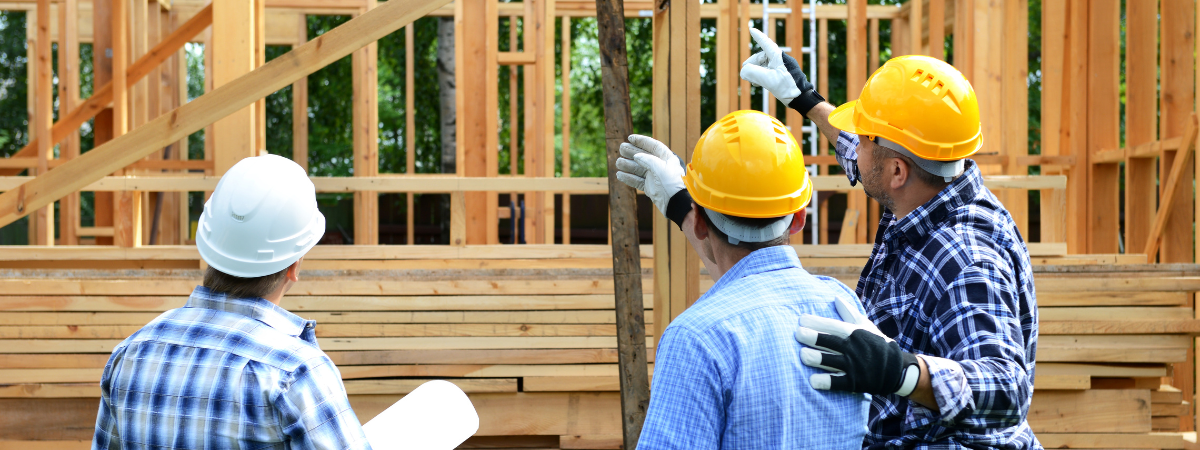Does Your Insurance Cover All of These Construction Risks?

Construction industry risks are increasing exponentially. And the factors (operational, environmental and contractual) could be internal or external to your business.
This article covers the common risks and guides you on risk management, with a reminder to review your insurance coverage.
Safety hazards/worker accidents and injuries
Safe Work Australia lists high rates of fatalities by occupation: 8.2 deaths per 100,000 for machinery operators and drivers; 2.9 per 100,000 for labourers. The stats are slightly better by industry: 2.1 per 100,000 for construction.
As for serious claims, construction fares worse – 17 serious injury claims per 100,000 workers. Overall, body stressing, such as through manual handling, caused almost four in 10 serious claims. Falls, slips or trips resulted in about a quarter of serious claims. Limb injuries account for 58% of serious claims.
Safe Work Australia resources details risk control measures, emergency plans, safe work method statements and high-risk construction work measures.
Also, check the icare Foundation’s joint project involving virtual reality training to address these safety challenges for construction workers:
-
Factors that lead to young and inexperienced workers’ unsafe behaviours and accidents
-
Site supervision and project management issues that lead to accidents and injuries
-
Workplace cultures, systems and other organisational factors that lead to accidents and injuries in the sector.
Consider how your business could improve how it deals with those challenges. Meanwhile, another study found that a five-day workweek boosted construction workers’ well-being.
Labour shortages
Australia will be short of 100,000 construction workers by next year, according to the Arcadis Construction Costs Index Report. Try these approaches to become a standout would-be employer:
-
Assess what sweeteners you can offer – higher pay, half-day Fridays, longer paid holidays, training opportunities, work culture and other perks for employees
-
Sharpen your job ad by detailing specific duties, required and desired skills and qualifications and benefits
-
Seek advice from your industry associations regarding which job boards generate the highest traffic
-
Tap into your network and communities regularly to seek referrals, raise your profile and hopefully drive leads your way to fill your vacancies. Keep veterans, mature-age people, women, and career-changers on your radar, too
-
Partner with a group training organisation to benefit from their wider networks, access to grants, etc., to recruit and manage apprentices for you
Damage or theft to equipment & tools
Most equipment, material and tools theft occur onsite via forced entry or cut locks; the next highest category is theft from vehicles. Stay a step ahead with these tips:
-
Befriend the neighbours so they can alert you if something’s array
-
Invest in heavily weighted panel-style fencing if timber hoarding isn’t in your budget
-
Affix a sign with a mobile phone number for after-hours contact
-
Illuminate entry and exit points at night once the power is connected. Investigate solar-powered motion security lights, too, such as these from Kogan
-
Erect temporary mobile security cameras that you can access via a smartphone app
-
Avoid stockpiling your supplies on site
-
For a house project, for instance, build the garage to the lock-up stage to secure supplies there
-
Arrange for alternative portable storage, such as heavy-duty site cabinets or boxes with tamper-resistant locks
-
Engrave your name, number and, in a hidden place, such as the battery pack slot, a unique mark on your power tools
Increasing material costs
Signing a fixed-priced contract can squeeze margins with increasing materials costs. Here’s how to tackle these risks:
-
Review existing contracts for wriggle room to claim extra costs due to these price increases
-
Check the extension of time regimes as they may accommodate shipping delays or material shortages that trigger price rises
-
Be mindful that off-the-shelf master builder contracts don’t often allow you to claim extra costs for pricier materials, so consider carefully drafting additional clauses to address this
-
Aim to index prices as a form of forecasting as an approach to dealing with price rises
-
If you have subbies work for you, be alert to claims for extra time relating to delayed materials or cost increases. Ensure they’re substantiated.
Contract works insurance
Given the wide range of risks that builders, tradies and subcontractors face, there’s a good range of insurance policies available. Usually, the key contractor and your financial institution will contractually require you to have such a policy. Known as contract works or construction works insurance, it can cover:
-
Material damage
-
Legal liability and legal fees resulting from personal injury or property damage to third parties
-
Accidental physical loss or damage
-
Fire
-
Theft
-
Malicious damage
-
Cyclones, storms, hail, floods
-
Accidental damage.
Contract/construction works insurance covers events that happen to your building project during construction. Consider optional extra cover for materials in storage, located offsite, and in transit, as well as for plant and tools.
We can help suggest a customised insurance package that meets the unique needs of your business.
Any financial product advice in this content is provided by cgib AFSL No. 231183. This material is general in nature and has been prepared without taking into account your objectives, financial situation or needs. Accordingly, before acting on it, you should consider its appropriateness to your circumstances. cgib respects your online time and privacy.
Tags: Builders






